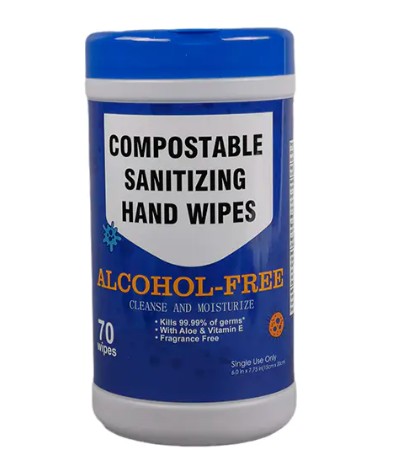Disinfecting wipes are formulated to effectively eliminate common household bacteria, viruses, and other pathogens from various surfaces, making them a convenient and versatile cleaning solution for everyday use. The effectiveness of disinfecting wipes in killing bacteria depends on several factors, including the active ingredients, contact time, and surface type. Let's explore how disinfecting wipes work and their efficacy in eliminating common household bacteria.
The active ingredients in disinfecting wipes, such as quaternary ammonium compounds (quats), alcohol, hydrogen peroxide, or bleach, play a crucial role in their antimicrobial efficacy. These ingredients work by disrupting the cell membranes of bacteria, viruses, and other microorganisms, leading to their destruction and preventing their ability to multiply. Each active ingredient has different mechanisms of action and efficacy against specific types of pathogens.
Quaternary ammonium compounds (quats) are commonly used in disinfecting wipes and are effective against a broad spectrum of bacteria, including common household bacteria such as Staphylococcus aureus (staph), Escherichia coli (E. coli), and Salmonella. Alcohol-based disinfecting wipes, such as those containing isopropyl alcohol or ethanol, are also effective against bacteria, viruses, and fungi, including influenza viruses and antibiotic-resistant bacteria like methicillin-resistant Staphylococcus aureus (MRSA). Hydrogen peroxide-based disinfecting wipes are effective at killing bacteria, viruses, and mold spores, while bleach-based wipes offer broad-spectrum antimicrobial activity against bacteria, viruses, and fungi.
The efficacy of disinfecting wipes also depends on the contact time, which refers to the amount of time the surface must remain wet with the disinfectant to effectively kill pathogens. Most disinfecting wipes require a specific contact time, typically ranging from 30 seconds to 5 minutes, to achieve optimal antimicrobial efficacy. It's essential to follow the manufacturer's instructions regarding contact time to ensure effective disinfection.
Moreover, the type of surface being treated can affect the efficacy of disinfecting wipes. Non-porous surfaces, such as stainless steel, glass, and plastic, are generally more straightforward to disinfect because they do not absorb the disinfectant and allow for better contact between the wipe and the pathogens. Porous or textured surfaces, such as wood, fabric, or upholstery, may be more challenging to disinfect effectively with wipes due to their uneven surfaces and potential for the disinfectant to be absorbed or evaporate quickly.
While disinfecting wipes are effective at eliminating common household bacteria when used correctly, it's essential to keep in mind that they are not suitable for all cleaning tasks. Disinfecting wipes are intended for use on hard, non-porous surfaces and may not be suitable for delicate or porous materials. Additionally, disinfecting wipes are not effective at removing dirt, debris, or organic matter from surfaces, so it's essential to clean surfaces with soap and water before disinfecting if they are visibly soiled.
Disinfecting wipes are effective at eliminating common household bacteria when used correctly, thanks to their active ingredients, contact time, and surface compatibility. By following the manufacturer's instructions and using disinfecting wipes on appropriate surfaces, you can effectively reduce the risk of illness and maintain a clean and healthy home environment.